
Unlocking the Inner Warrior: The Spiritual Path of Martial Arts
Explore how martial arts go beyond physical discipline, cultivating mindfulness, self-awareness, and spiritual growth on the journey to inner harmony.
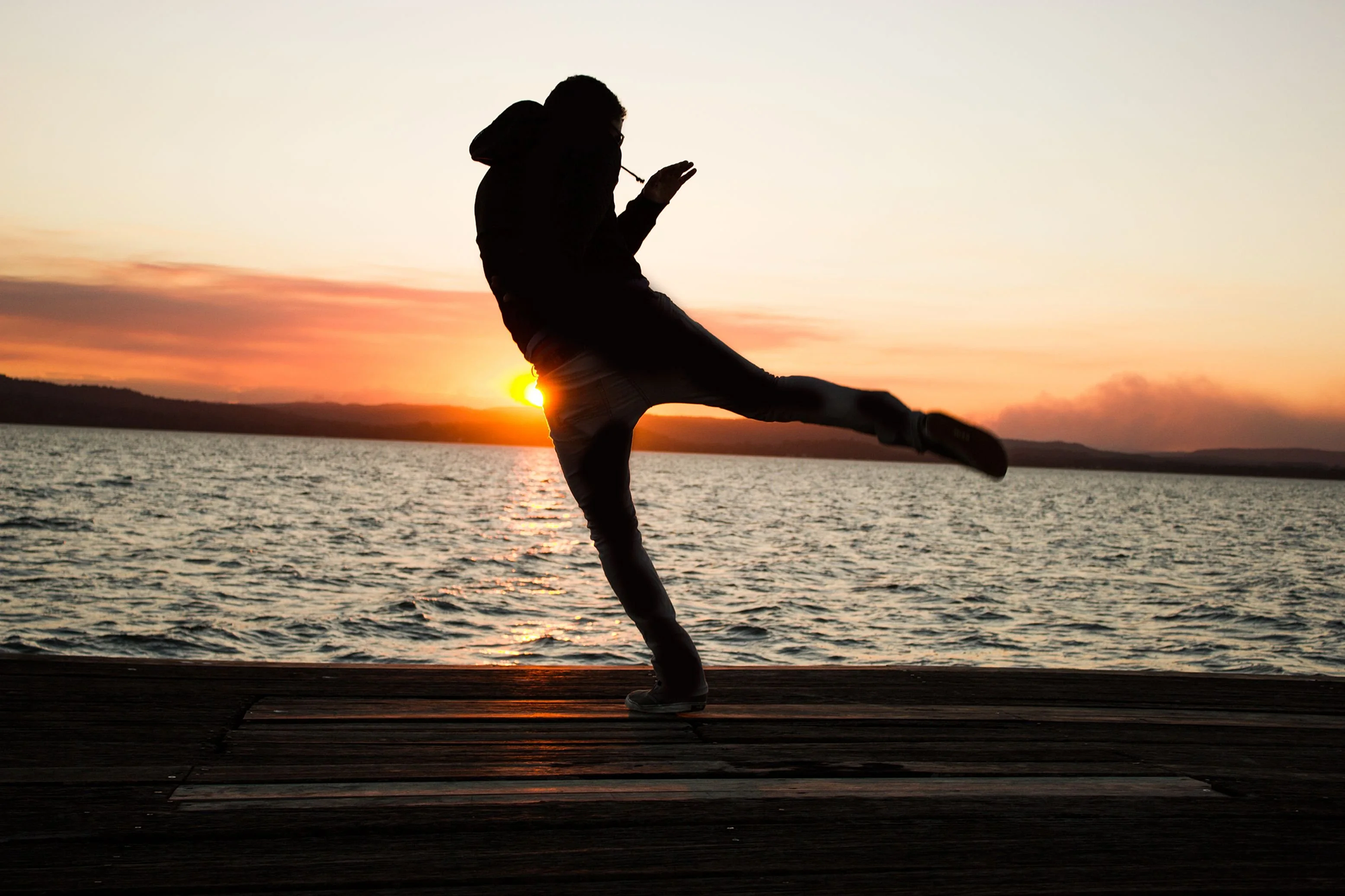
The Spiritual Aspect of Shadowboxing: A Journey Beyond the Physical
Introduction Shadowboxing is often perceived as a fundamental training exercise in boxing, kickboxing, and martial arts, where practitioners simulate a fight against an imaginary opponent. While its physical benefits—such as improving footwork, technique, and conditioning—are well-documented, the spiritual dimensions of shadowboxing remain largely unexplored. Beyond the mechanics of punches and footwork, shadowboxing can be a meditative, introspective, and even transcendental practice. This essay delves into the spiritual aspects of shadowboxing, examining its role as a form of moving meditation, a tool for self-discovery, and a ritual that bridges the mind, body, and spirit. By exploring historical, philosophical, and psychological perspectives, we will uncover how shadowboxing transcends mere physical exercise and becomes a pathway to deeper consciousness. 1. Shadowboxing as Moving Meditation 1.1 The Meditative State in Motion Meditation is commonly associated with stillness—sitting in silence, focusing on the breath, or chanting mantras. However, many traditions, such as Tai Chi, Qigong,
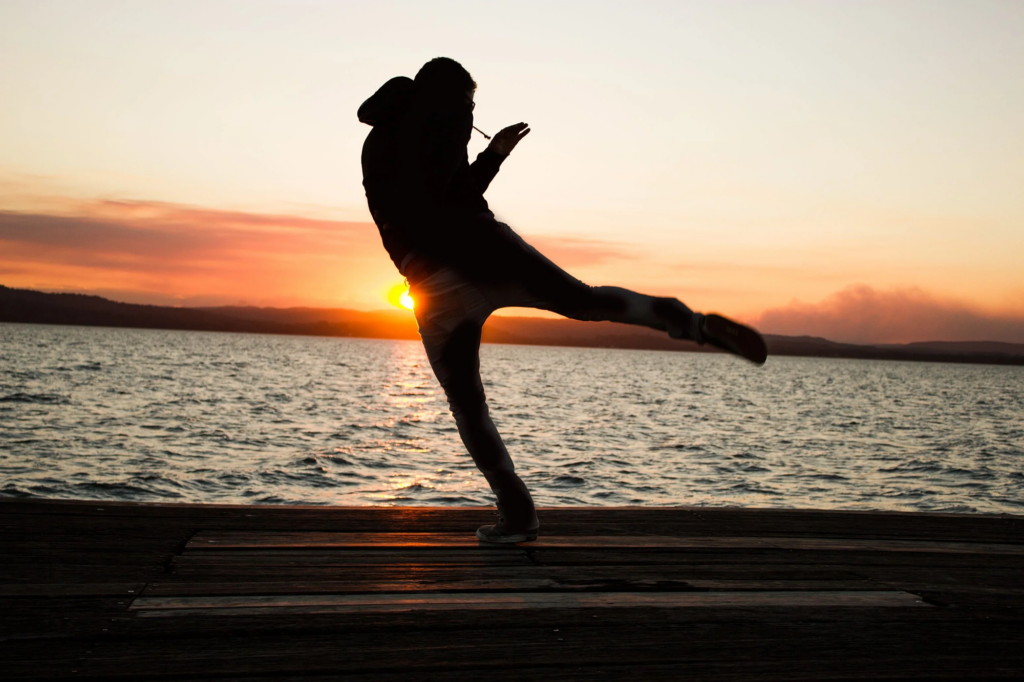
The Spiritual Aspect of Shadowboxing: A Journey Beyond the Physical
Introduction Shadowboxing is often perceived as a fundamental training exercise in boxing, kickboxing, and martial arts, where practitioners simulate a fight against an imaginary opponent. While its physical benefits—such as improving footwork, technique, and conditioning—are well-documented, the spiritual dimensions of shadowboxing remain largely unexplored. Beyond the mechanics of punches and footwork, shadowboxing can be a meditative, introspective, and even transcendental practice. This essay delves into the spiritual aspects of shadowboxing, examining its role as a form of moving meditation, a tool for self-discovery, and a ritual that bridges the mind, body, and spirit. By exploring historical, philosophical, and psychological perspectives, we will uncover how shadowboxing transcends mere physical exercise and becomes a pathway to deeper consciousness. 1. Shadowboxing as Moving Meditation 1.1 The Meditative State in Motion Meditation is commonly associated with stillness—sitting in silence, focusing on the breath, or chanting mantras. However, many traditions, such as Tai Chi, Qigong, and Sufi whirling,
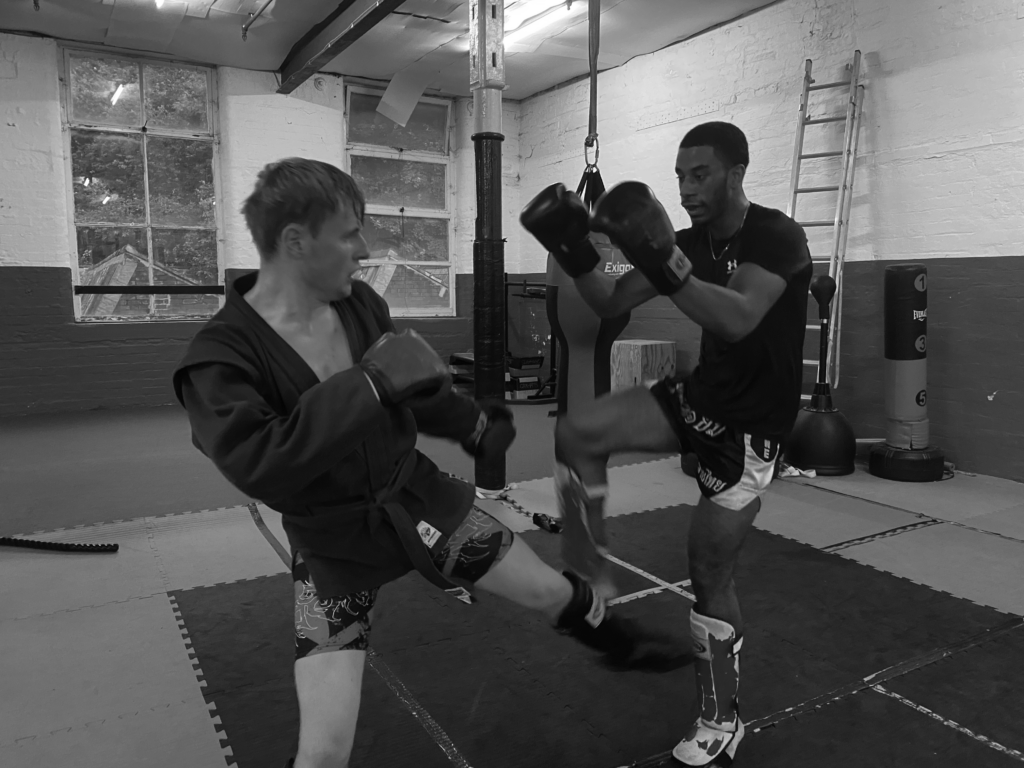
The Benefits of Kickboxing & Karate for Young Men
In a world where young men face increasing pressures—academically, socially, and professionally—finding ways to build physical fitness, mental toughness, and emotional resilience is more important than ever. Martial arts, particularly Kickboxing and Full Contact Karate, offer a unique combination of physical training, mental discipline, and personal growth that can profoundly impact young men’s lives. These disciplines are not just about learning to fight; they are about developing the skills and mindset needed to succeed in all areas of life. This article explores the specific benefits of Kickboxing and Full Contact Karate for young men, highlighting how these practices can help them grow into strong, confident, and well-rounded individuals. 1. Physical Fitness and Athleticism Kickboxing and Full Contact Karate are both highly effective forms of exercise that promote overall physical fitness. For young men, these martial arts provide a full-body workout that builds strength, endurance, flexibility, and coordination. Strength and Conditioning: Kickboxing, with its
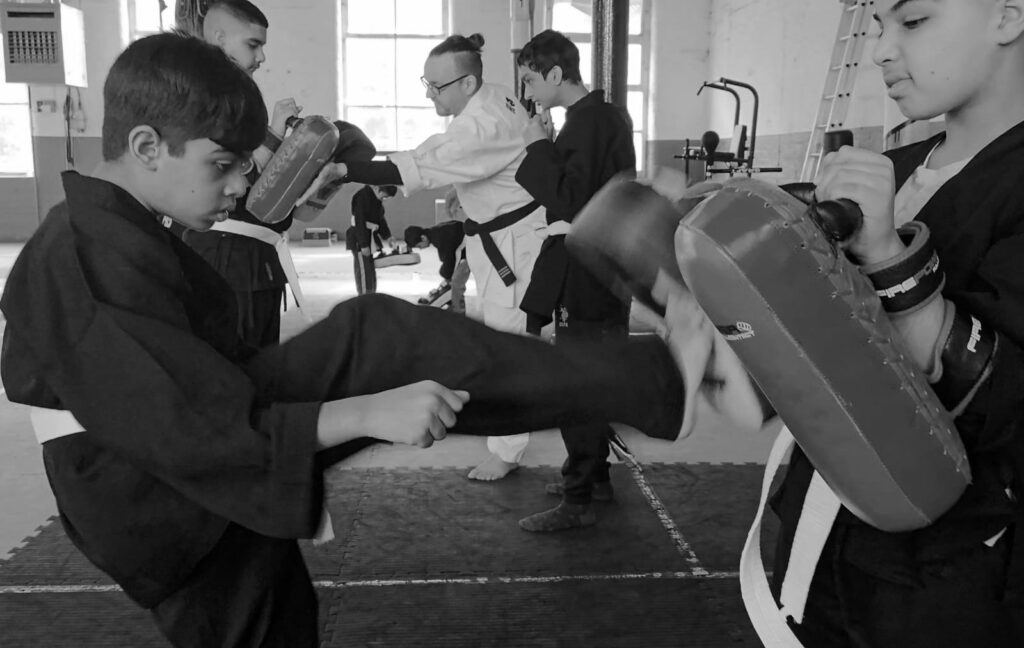
The Benefits of Children’s Karate Classes in Huddersfield
KIDS & YOUTH KARATE COMBINED KARATE/JUJITSU IN HUDDERSFIELD childrens Karate kids Karate Huddersfield childrens kickboxing Junior MMA self defence Click here to see the full timetable At Kurohasu Combat Karate Huddersfield, we believe every child has the potential to be a confident, disciplined, and strong individual – both inside and out! Our Children’s karate classes are designed to be fun, engaging, and empowering, helping children build focus, respect, and self-confidence while learning the exciting art of karate. 10.30am to 11.30am SaturdayS & MONDAYS 7PM In today’s fast-paced, technology-driven world, parents are constantly seeking ways to help their children develop physically, mentally, and emotionally. One activity that has stood the test of time and continues to gain popularity is martial arts, particularly karate. Karate is more than just a physical activity; it is a holistic practice that fosters discipline, respect, and self-confidence. For children, karate classes offer a unique opportunity to grow in ways
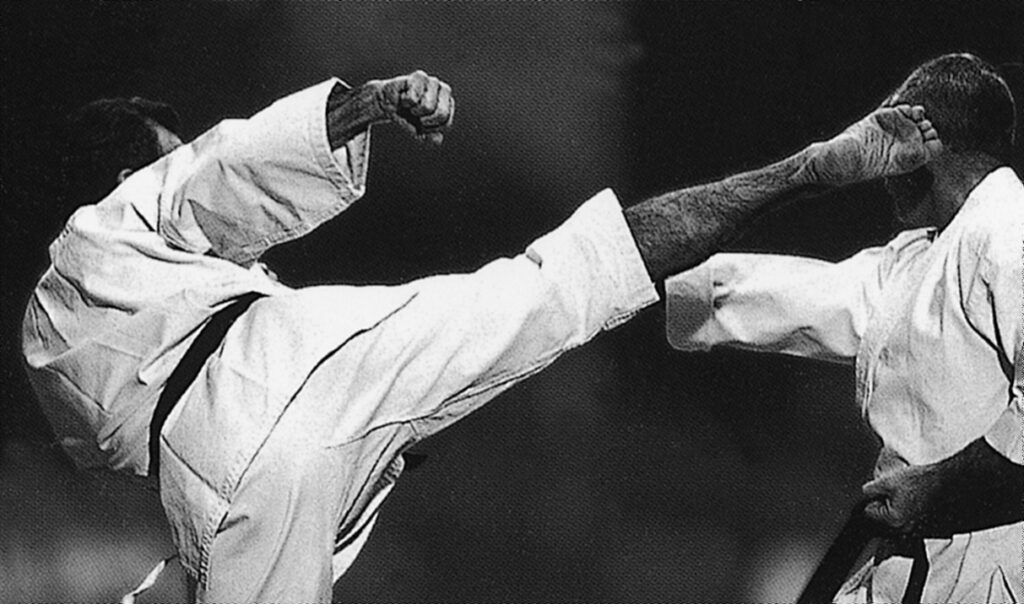
Sparring In Early Karate
Sparring in early karate in Okinawa, known as “Te” or “Tode,”** was quite different from modern karate sparring. Here’s an overview of what it looked like: Characteristics of Early Okinawan Sparring: 1. No Formalized Sparring Rules: – Early karate did not have structured sparring formats like modern kumite. Instead, practice was heavily focused on kata pre-arranged forms) and bunkai (application of kata techniques). – Sparring was often informal and spontaneous, emphasizing practical self-defense rather than sport. 2. Close-Range Combat: – Techniques were designed for close-quarters combat, reflecting the need for self-defense in real-life situations. – Strikes, joint locks, throws, and grappling were all part of the repertoire, as early karate was a comprehensive martial art. 3. Full-Contact Practice: – Sparring was often full-contact or semi-contact, with practitioners testing their techniques in realistic scenarios. – Protective gear was not used, so practitioners had to control their strikes to avoid serious injury. 4. Emphasis on

The Practice of Shikan Meditation
Shikan meditation is a form seated meditation, integral to the practice of Tendai Buddhism. The term “Shikan” is derived from the Japanese words shi & kan, which means “stopping” & “seeing.” This practice emphasises non-thinking, direct experience, and total awareness of the present moment. In Shikan meditation, the meditator sits in a posture of stillness, allowing thoughts, sensations, and perceptions to arise and pass away without attachment, judgment, or interference. Through this simplicity, the practitioner cultivates a deep awareness and a profound connection with the present. Historical and Philosophical Foundations Shikan is practiced within the Tendai school, as inherited from the Chinese Tiantai school. Zhiyi chose this name (shikan) over the more common ‘Chan’ (Zen) because he wanted to emphasise the importance of balanced Samatha and Vipassanā, something he felt was missing from the more popular ‘Chan’ practice. The Practice of Shikan Meditation At its core, Shikan meditation is characterised by effortless attention. There is
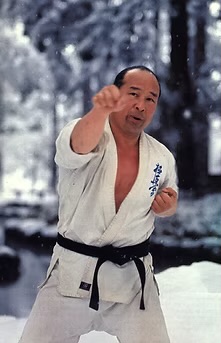
The Legendary Training Regime of Mas Oyama in the Mountains
Introduction Mas Oyama, the founder of Kyokushin Karate, is renowned not only for his martial arts prowess but also for his unique and rigorous training methods. His infamous training sessions in the mountains exemplify the relentless pursuit of perfection, discipline, and self-discovery that he embodied as a martial artist. This essay will explore Oyama’s training philosophy, the specifics of his mountain regimen, the principles behind such intense physical and mental conditioning, and the impact of these experiences on his life and martial arts legacy. Early Life of Mas Oyama Mas Oyama was born in 1923 in Korea under Japanese rule and moved to Japan after World War II. He began his martial arts training at a young age, studying various forms of karate and traditional martial arts, eventually developing a profound interest in Shotokan karate. His desire to excel led him to seek further knowledge and practice, which ultimately drove him to the
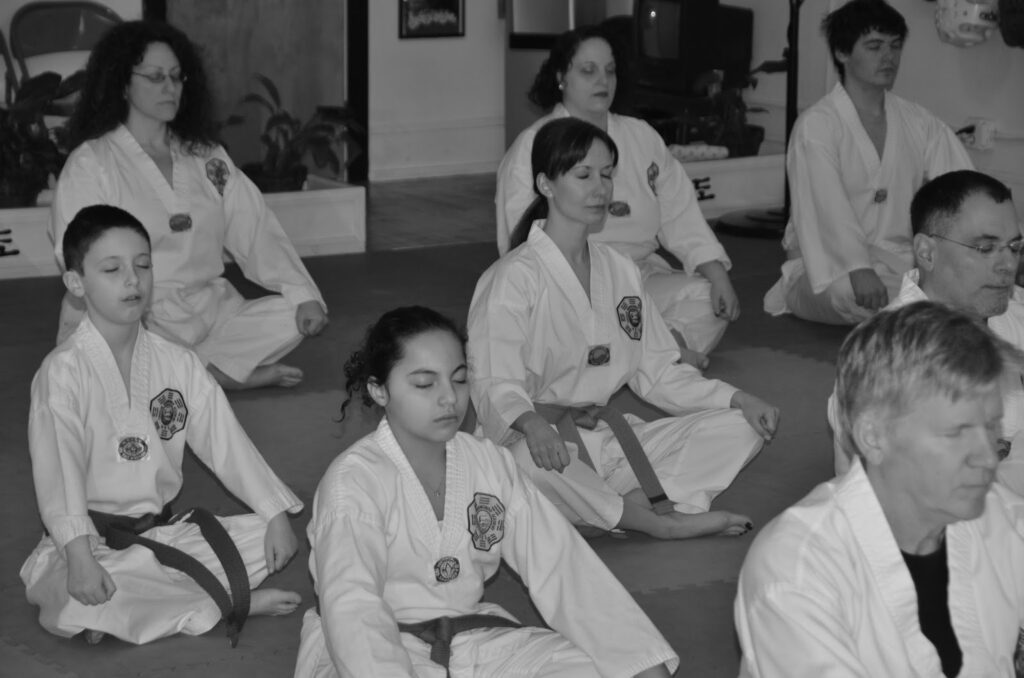
The Concept of “Do” in Martial Arts: A Pathway to Personal Growth and Mastery
Martial arts, across cultures and disciplines, offer more than just techniques for self-defence or physical combat. They serve as a way to cultivate discipline, focus, and personal growth. A central concept that appears in many martial arts traditions is the term “Do” (道), which translates to “the way” or “the path.” This concept encapsulates not just a physical practice but a philosophy that extends beyond the dojo or training hall, shaping one’s character and worldview. In this essay, we will explore the significance of “Do” in martial arts, its philosophical roots, and how it informs the practice and mindset of martial artists. The Philosophical Origins of “Do” The term “Do” has its origins in ancient Chinese and Japanese philosophies. In Chinese, it is written as “道” (dao), which can be interpreted as “the way,” “the road,” or “the path.” This concept is deeply rooted in Daoism, an ancient Chinese philosophical system that emphasises
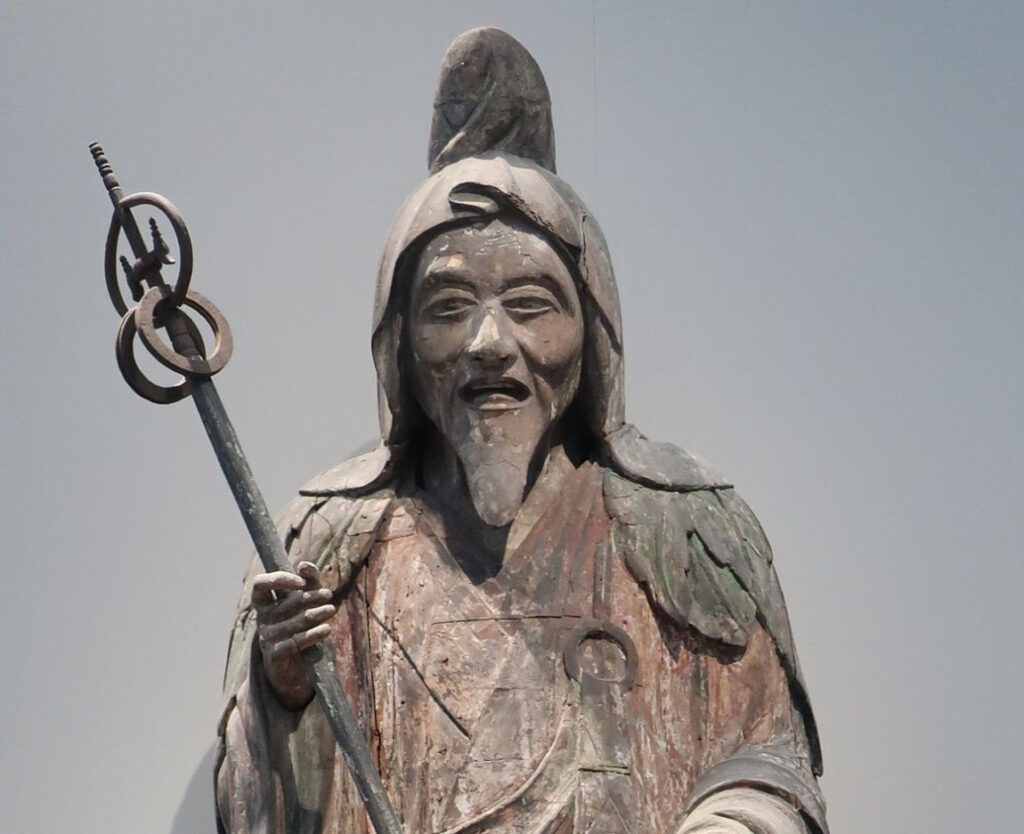
En no Gyoja
En no Gyoja (Japanese: 役の行者), also known as En no Gyōja or En no Gyoja, is a legendary figure in Japanese history and folklore, considered the founder of the Shugendo tradition. Shugendo is a syncretic religious and spiritual practice that blends elements of Japanese animism, Taoism, Esoteric Buddhism, and Shintoism. En no Gyoja’s life and deeds have become mythologized over time, making him a fascinating and sometimes elusive figure. His story blends historical facts with supernatural and legendary elements. Early Life and Historical Background En no Gyoja is believed to have lived around the late 7th and early 8th centuries (around 634–701 CE), during the Nara period in Japan. However, there is no definitive historical record of his life, and much of what is known about him comes from later texts, oral traditions, and the Shugendo canon. According to traditional accounts, he was born in the Kinki region of Japan (around present-day Nara
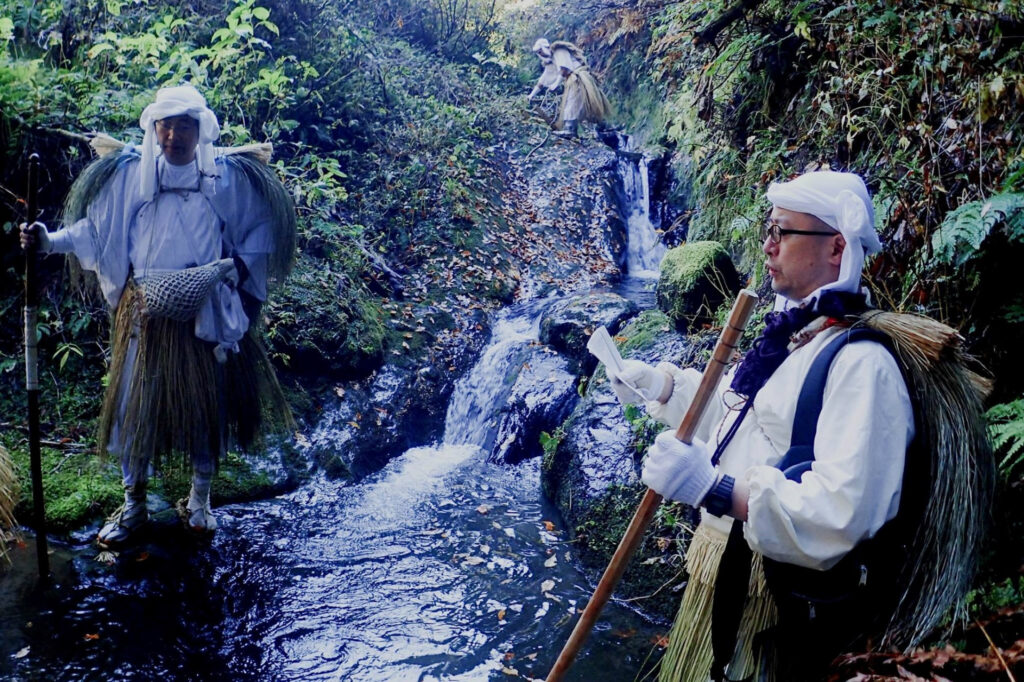
Shugendo: The Spiritual Path of Asceticism in Japan
Shugendo, often dubbed the “way of testing and training,” represents a unique religious practice in Japan, characterized by the amalgamation of indigenous beliefs, Buddhism, and Shintoism. It remains a living tradition steeped in ascetic practices, reverence for nature, and a quest for spiritual enlightenment through rigorous training. This essay aims to offer a comprehensive understanding of Shugendo, exploring its historical development, philosophical underpinnings, practices, and its role in contemporary Japan. Historical Context Shugendo’s roots can be traced back to the Heian period (794–1185), although its foundational elements existed earlier. It emerged in the mountainous regions of Japan, where the revered natural landscape facilitated a profound sense of spirituality. Mountains, seen as the abode of deities and spirits, became central to the ascetic practices of Shugendo practitioners, known as yamabushi (“those who lie down in the mountains”). The founder of Shudendo is said to be En no Gyoja. Many legends surround En no Gyoja
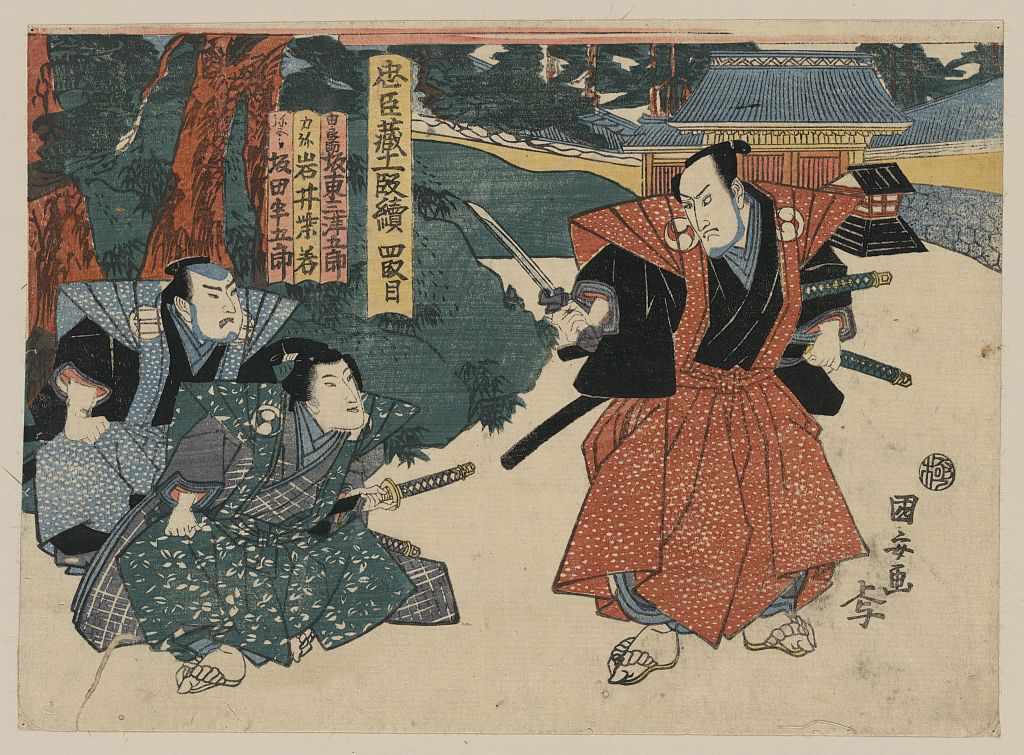
Ronin Samurai
Introduction The term “ronin” evokes images of solitary swordsmen, wandering the lands of Japan during the feudal era, embodying a complex blend of honor, desperation, and freedom. Historically, ronin were masterless samurai, warriors who had lost their lords due to death, disgrace, or political upheaval and who navigated a shifting social landscape. This essay will explore the historical context of the ronin, their societal roles, their cultural representations, and their lasting legacy in Japanese history and beyond. Historical Background The Samurai Class To understand the concept of ronin, one must first comprehend the samurai, the warrior class that dominated Japan from the late 12th century until the 19th century. Samurai adhered to a strict code of conduct known as Bushido, which emphasized loyalty, honor, and martial prowess. Initially, samurai served as military retainers for noble families during the rise of feudalism in Japan. Over centuries, they became an esteemed class that not only
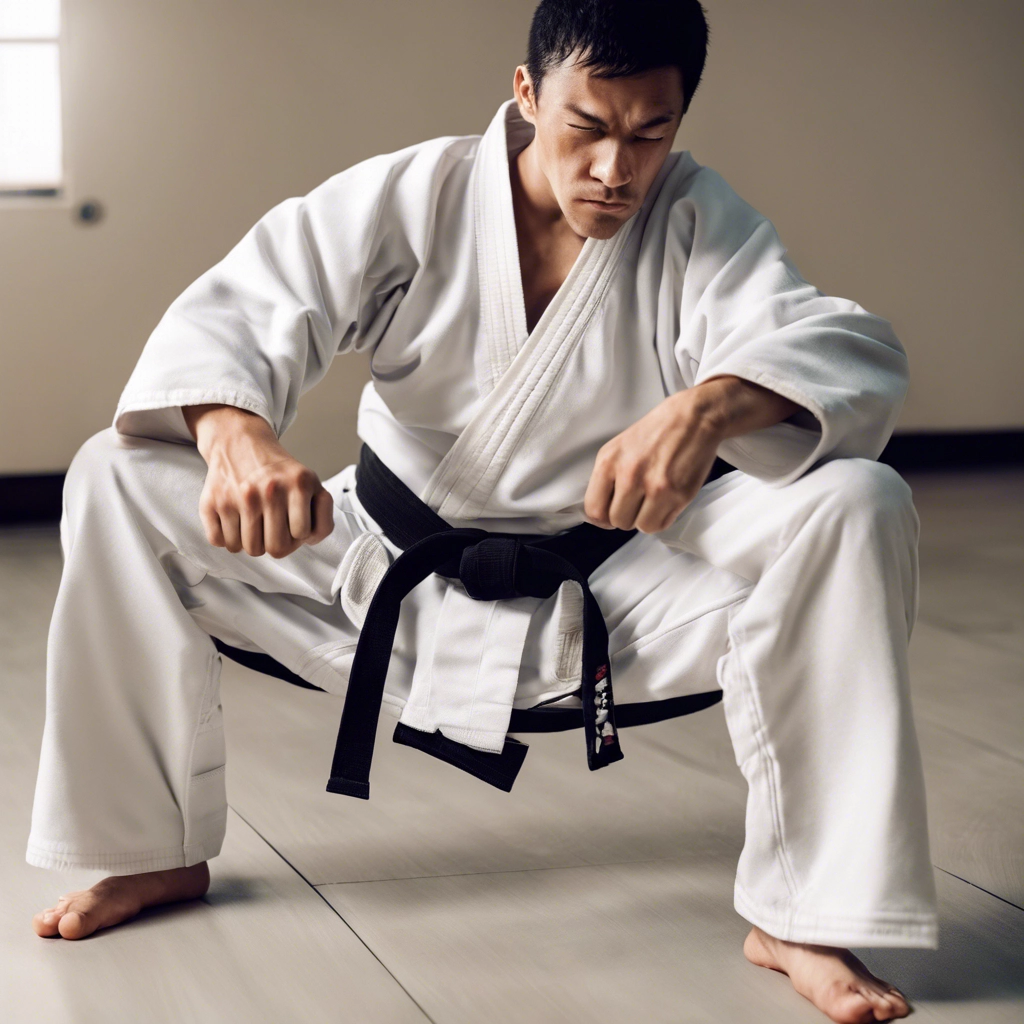
The History of Japanese Ju Jitsu
Introduction Jujitsu, a traditional Japanese martial art, is a complex system of unarmed combat techniques that focuses on using an opponent’s energy and movements against themselves. It is known for its effectiveness in self-defense, emphasizing joint locks, throws, and grappling. The rich history of jujitsu reflects the wider social, cultural, and political developments in Japan over many centuries, intertwining with the evolution of the samurai class and Japanese martial culture. ## Origins and Development in Feudal Japan ### Early Beginnings The origins of jujitsu can be traced back to the samurai warriors of feudal Japan, dating as far back as the 16th century. During this time, Japanese martial arts began to professionalize into structured systems, with foundation techniques rooted in battlefield tactics. Training was initially centered around weapons such as the sword (katana), spear (yari), and polearm (naginata), with unarmed techniques taking a secondary role. ### Evolving Techniques Jujitsu is believed to have
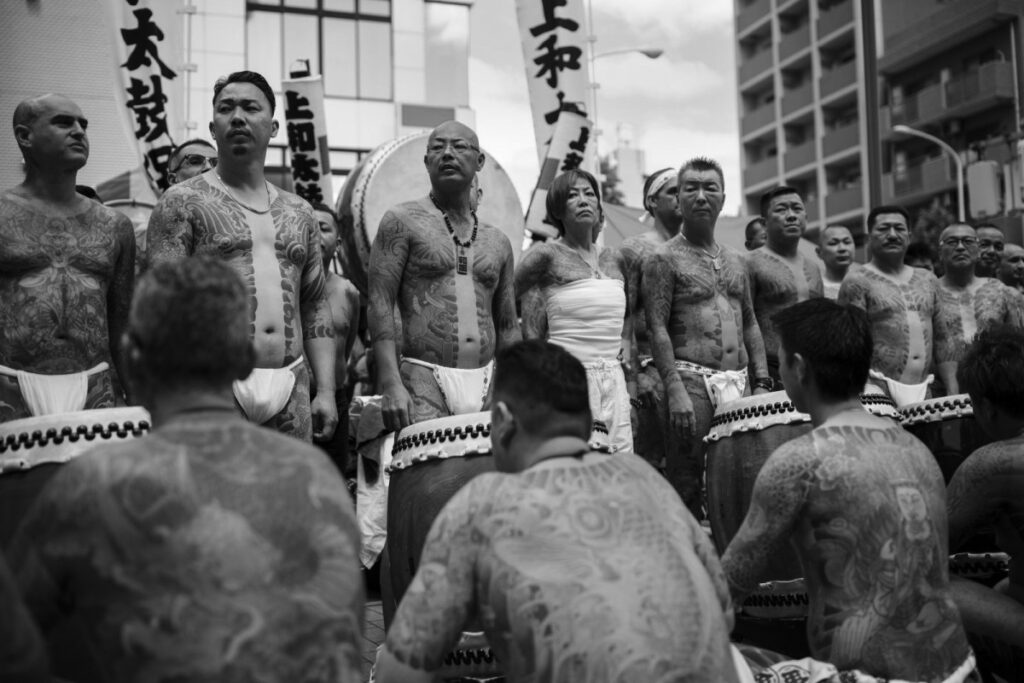
The Yakuza Involvement in Japanese Combat Sports
The Yakuza, organised crime syndicates in Japan, have historically had a complex and often controversial involvement in various aspects of Japanese society, including combat sports like boxing, professional wrestling, and mixed martial arts (MMA), particularly Pride FC. While not universally true for all organisations or events, their involvement can be characterised by several key points: 1. **Promotion and Management**: Yakuza members have been known to have a hand in managing fighters and promoting fight events. They might provide financial backing, which can be crucial for smaller promotions or independent fighters. 2. **Gambling**: Gambling on combat sports events is a significant aspect of Yakuza activities. The syndicates have historically run illegal betting operations, which can provide lucrative income. Such involvement can lead to match-fixing, where outcomes are influenced to ensure a profit for the bettors. 3. **Pressure and Control**: Fighters and promoters may face pressure from Yakuza members to cooperate or engage in unethical
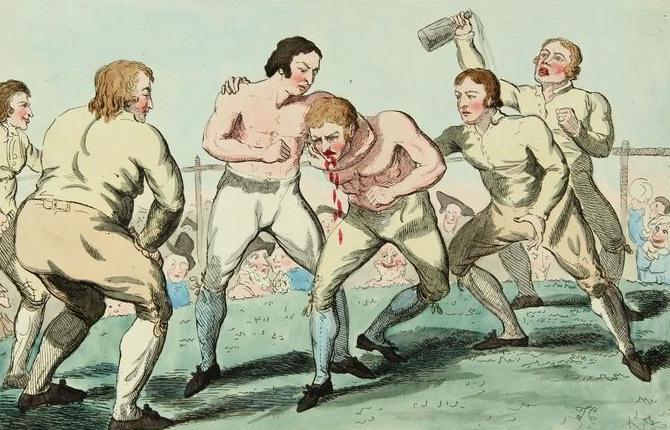
Boxing in the UK Prior to the Queensbury Rules
## Introduction Boxing, often heralded as “the sweet science,” has its roots deeply embedded in human history. The traditional form of boxing, known for its strategic elements and cultural significance, has evolved significantly from its early days. In the UK, the sport underwent a series of transformations long before the introduction of the Marquess of Queensbury Rules in the 19th century. These early contests were marked by their own unique regulations, cultural contexts, and social implications. This essay will trace the evolution of boxing in the UK prior to the establishment of the Queensbury Rules, examining its origins, the styles and methods employed, the socio-political context of the times, and its cultural significance. ## Early Origins of Boxing ### Prehistoric and Ancient Boxing The history of boxing can be traced back to ancient civilizations, with evidence of fist fighting depicted in artifacts dating back to 3000 BCE. The sport appears in Mesopotamia, Egypt,
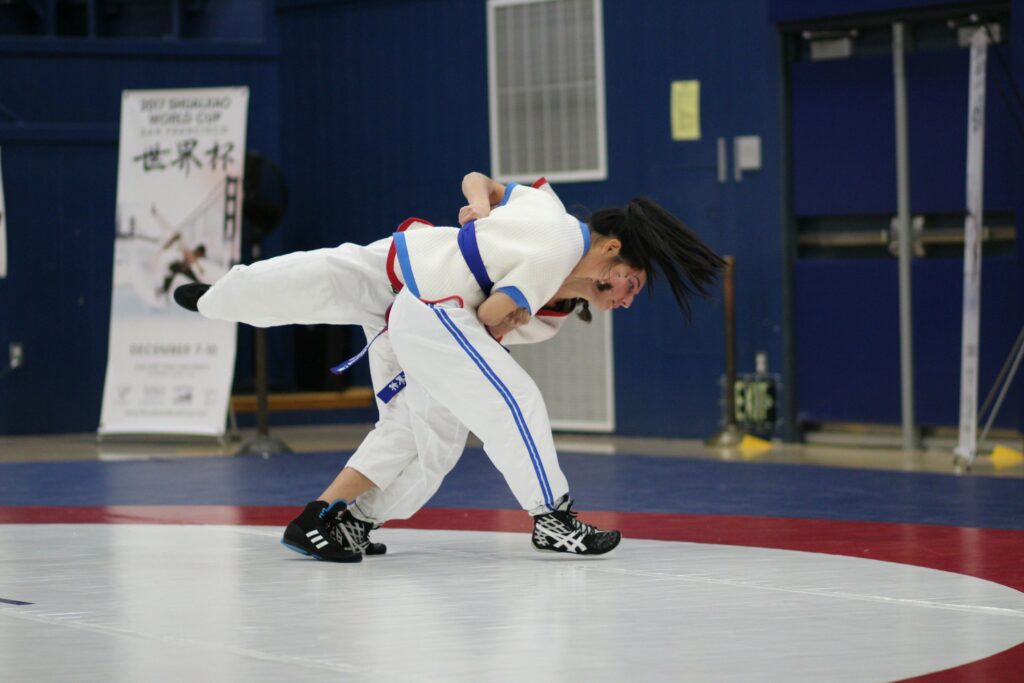
The Art of Shuai Jiao: China’s Ancient Wrestling Tradition
Introduction Shuai Jiao, the ancient Chinese martial art of wrestling, embodies a rich history marked by its intricate techniques, deep cultural significance, and martial efficiency. Rooted in China’s millennia-old martial arts heritage, Shuai Jiao has evolved from a battlefield necessity to a modern sport while preserving essential aspects of its traditional roots. This essay aims to explore the origins, techniques, philosophy, training methods, and contemporary relevance of Shuai Jiao, offering insights into this fascinating martial art. Historical Background Shuai Jiao traces its origins to the prehistoric era, with evidence suggesting that wrestling-like activities were practiced as early as the Xia Dynasty (c. 2070–1600 BCE). Although the exact lineage remains debated, Shuai Jiao is closely related to various forms of wrestling found in the Chinese martial arts spectrum. It was mentioned in ancient texts such as the “Shiji” (Records of the Grand Historian) by Sima Qian, and also featured in the military manual “Sun
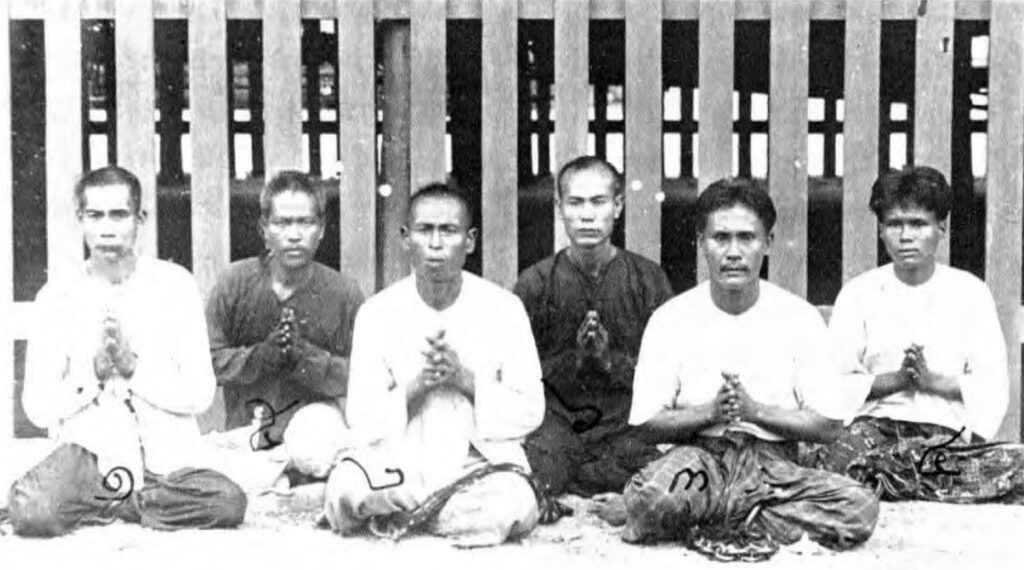
Martial Arts Within the Chinese Triads
Introduction Martial arts have long been an integral part of Chinese culture, embodying historical practices, philosophical beliefs, and methods of self-defence. They represent not just physical discipline but also a way of life, steeped in traditions that date back several millennia. Within this rich tapestry, there exists a controversial aspect associated with the Chinese triads—secret societies marked by their organisational structures and criminal enterprises. This essay explores the intricate relationship between martial arts and the Chinese triads, highlighting historical contexts, cultural significance, and the social dynamics that have shaped both disciplines over the years. Historical Background of the Triads The origins of the Chinese triads can be traced back to the 17th century when secret societies were formed to resist the rule of the Manchu-led Qing dynasty. These early federations were often driven by nationalistic sentiments, aimed at restoring the Ming dynasty. Over time, their objectives evolved, and many triad societies became intertwined
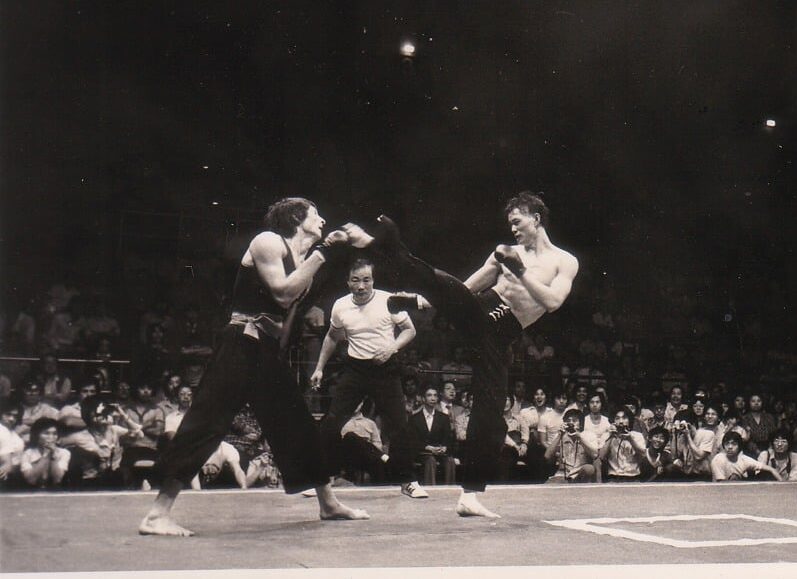
The History of Sanda/Sanshou
Introduction Sanda, also known as Sanshou, is a Chinese martial art that combines elements of traditional Chinese martial arts with modern combat techniques. It is a full-contact sport that includes striking, grappling, and wrestling techniques. The terms “Sanda” and “Sanshou” are often used interchangeably, with “Sanda” translating to “free fighting” and “Sanshou” to “free hand.” This essay explores the origins, development, and significance of Sanda and Sanshou in the martial arts world. Origins and Early Development The roots of Sanda and Sanshou can be traced back to ancient China, where martial arts were developed for self-defence, military training, and physical fitness. Traditional Chinese martial arts, such as Kung Fu, Tai Chi, and Wing Chun, have influenced the techniques and principles of Sanda. The concept of “Sanshou” (scatter hands) is much older than “Sanda” and was used to describe unstructured fighting techniques. Lei Tai Sanda can also be traced back to ‘Leitai’ challenge fight
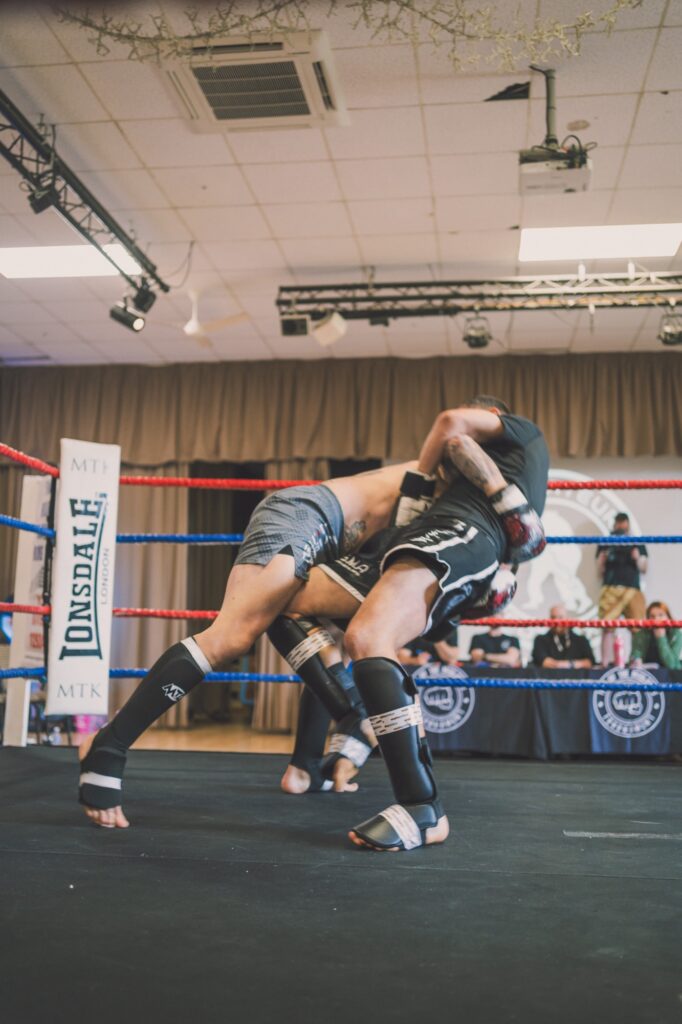
The Art and Evolution of Japanese Shootboxing
Japanese Shootboxing is a dynamic and multifaceted combat sport that emerged in Japan in the late 20th century. It fuses elements of kickboxing, wrestling, and traditional martial arts, creating a unique and electrifying spectacle that distinguishes itself from other combat sports. Grounded in a rich cultural heritage and characterized by its innovative techniques and rules, Japanese Shootboxing has gained significant popularity both within Japan and internationally. #### Historical Context The roots of Shootboxing can be traced to the early 1980s, when Japanese martial artist and promoter, Takeshi Caesar, sought to combine the striking techniques of kickboxing with the grappling elements prevalent in wrestling and Judo. This innovation came at a time when traditional martial arts were beginning to adapt to modern influences, and the demand for new combat sports was rising. By the mid-1990s, Shootboxing had formalized its rules and regulations under the auspices of organizations like the Shoot Boxing Association of Japan
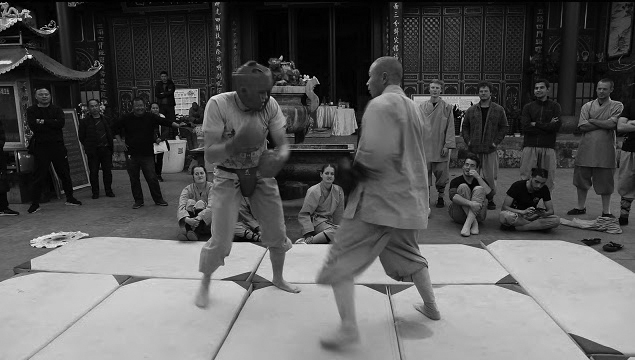
The History of the Shaolin Temple
Introduction The Shaolin Temple, located in the Henan province of China, is renowned worldwide as the birthplace of Chinese martial arts and a symbol of Buddhist culture. Establishing its significance in both religious and martial contexts, the temple’s history stretches back over a millennium. This essay seeks to investigate the origins, evolution, and enduring legacy of the Shaolin Temple, examining its historical milestones and cultural impact in various dimensions of society. Early History (5th-6th Century) The Shaolin Temple’s origins can be traced to the 5th century when it was founded by the Indian monk Bodhidharma. According to legend, Bodhidharma traveled to China to spread Buddhism and settled at the Shaolin Mountain, where he began teaching meditation and physical exercises to the monks. The early years of the temple were marked primarily by the transmission of Buddhist teachings and practices rather than martial arts. During the Northern Wei dynasty (386-534 CE), the first official
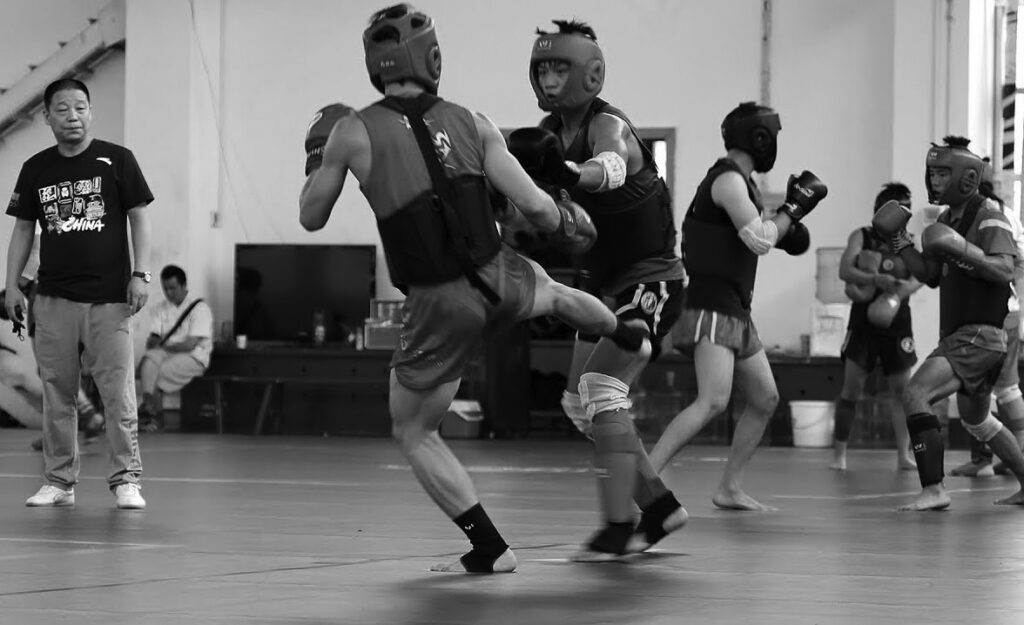
Sanda – Chinese MMA
Sanda, also known as Sanshou or Chinese kickboxing, is a popular form of full-contact martial arts that combines elements of traditional Chinese boxing techniques with modern kickboxing techniques. It is a highly dynamic and explosive combat sport that requires a combination of striking, kicking, wrestling, and takedowns. In this essay, we will delve into the history, techniques, training methods, rules, and benefits of Sanda. History of Sanda Sanda has a long and rich history that can be traced back to ancient China. It is believed to have originated from the military training methods of Chinese soldiers and has evolved over the centuries into a popular sport and form of self-defence. The term “Sanda” translates to “free fighting” in Chinese, reflecting the combative nature of the sport. During the early 20th century, Sanda was systematised and standardised by the Chinese military as a way to train their soldiers in hand-to-hand combat. It was later
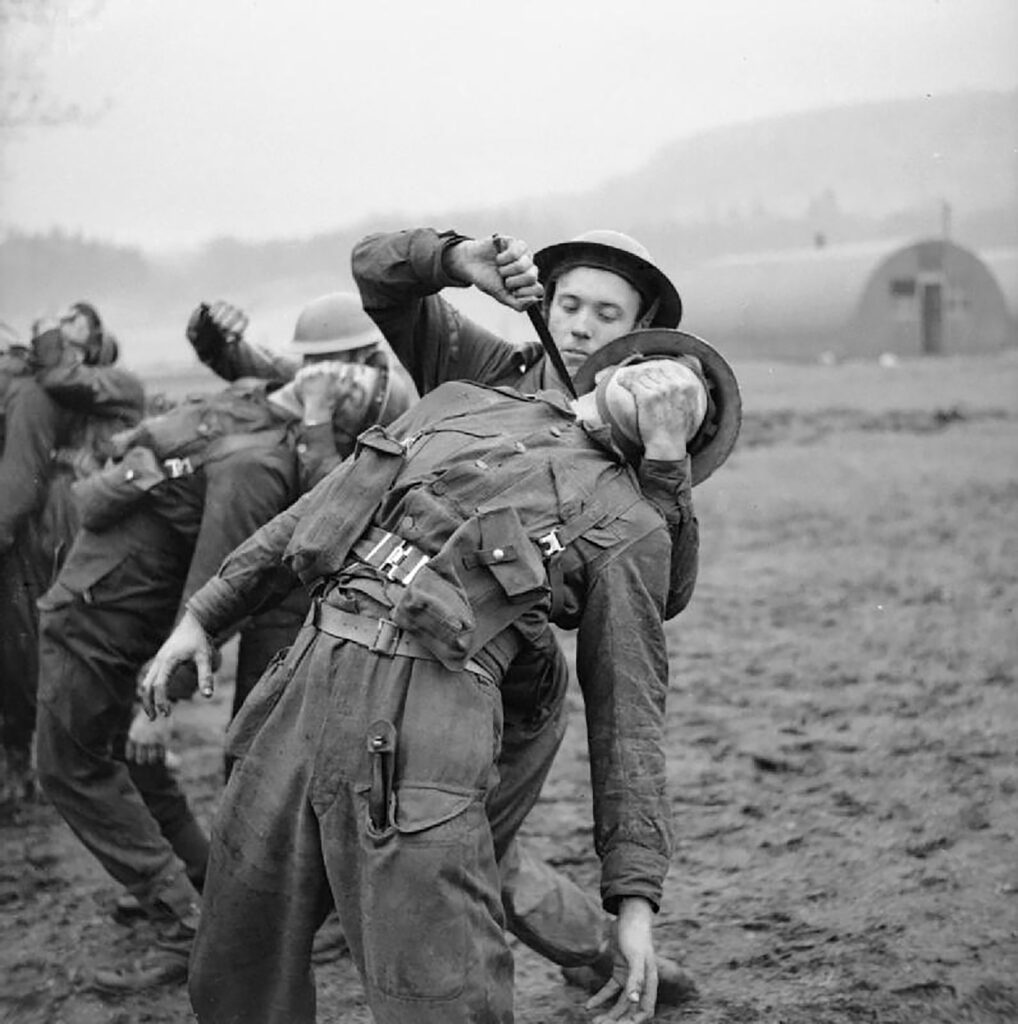
WW2 – Fairburn Combatives
Fairbairn Combatives is a system of hand-to-hand combat training developed by William E. Fairbairn and Eric Anthony Sykes during World War II. This system was designed to be simple, effective, and easy to learn, making it ideal for soldiers and others who needed to defend themselves in close-quarters combat situations. Fairbairn Combatives is based on the principles of street fighting, focusing on techniques that are practical and easy to use in real-life situations. The system is known for its emphasis on quick, decisive strikes to vulnerable areas of the body, such as the eyes, throat, and groin. These techniques are intended to incapacitate an opponent as quickly as possible, allowing the defender to escape or gain the upper hand in a fight. One of the key principles of Fairbairn Combatives is the use of preemptive strikes. Instead of waiting for an attacker to make the first move, practitioners are taught to strike first
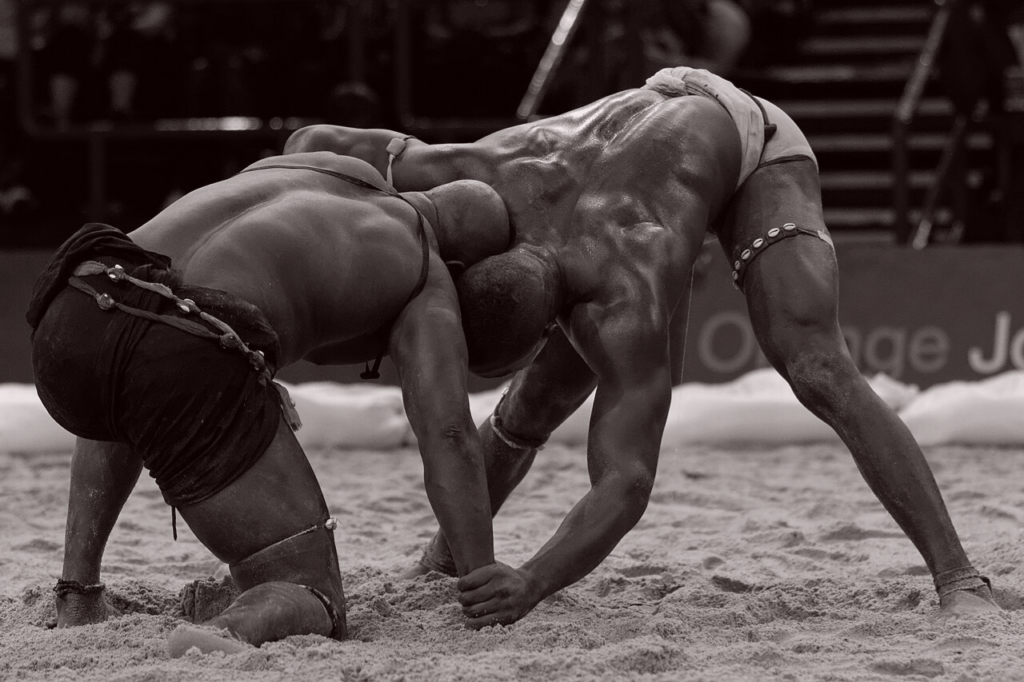
La Lutte Traditionnelle – Senegalese Wrestling
Senegalese wrestling, also known as La Lutte Traditionnelle, is a traditional form of wrestling that has been practiced in Senegal for centuries. It is a highly popular and respected sport in the country, with matches drawing large crowds and generating significant media attention. The origins of Senegalese wrestling can be traced back to the ancient wrestling traditions of the Serer people, one of the ethnic groups found in Senegal. Wrestling was originally practiced as a form of combat training for warriors and was also used to settle disputes between rival villages. In the early 20th century, Senegalese wrestling evolved into a more formalized sport, with rules and regulations being established. Today, matches are held in arenas across the country, with wrestlers competing in various weight categories. Senegalese wrestling is characterized by its unique combination of traditional wrestling techniques and ritualistic elements. Wrestlers often wear traditional clothing and perform elaborate pre-match rituals to honor
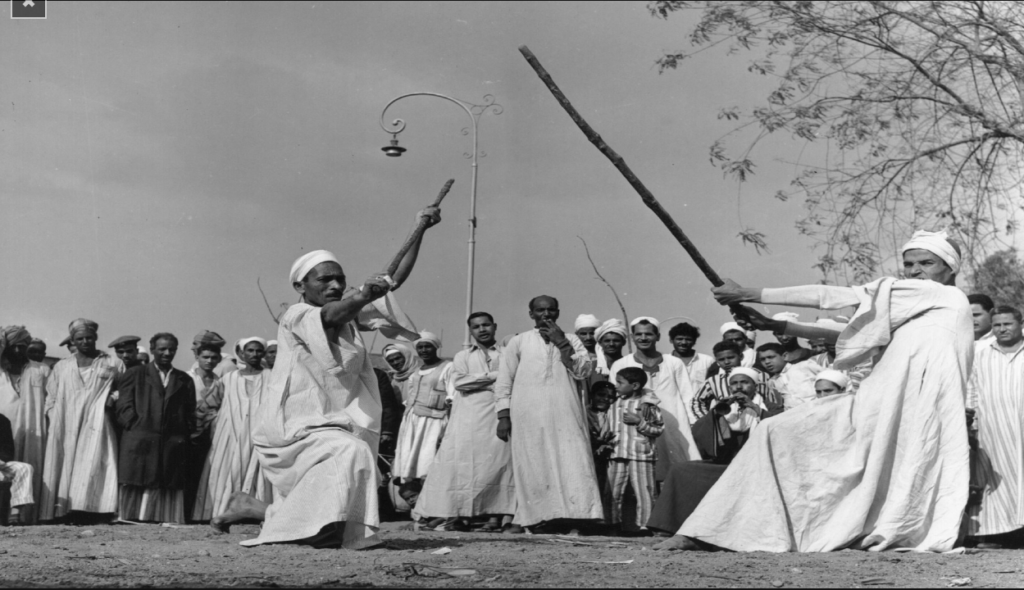
Tahtib – The Berber Martial Art
Tahtib is a traditional Berber martial art that has been practiced for centuries in North Africa and Sudan. The art of Tahtib originated as a form of combat training and self-defence for the Berber tribes in the region. Tahtib involves the use of a wooden stick, known as an asa, which is typically made from palm wood. The practitioner of Tahtib uses the stick to strike, block, and disarm opponents in a series of fluid and dynamic movements. The art of Tahtib also incorporates footwork, body movement, and grappling techniques. Historically, Tahtib was practiced by Berber warriors as a way to prepare for battle and defend their communities. It was also used as a form of entertainment during festivals and celebrations. Over time, Tahtib evolved into a more structured martial art with defined techniques and training methods. Today, Tahtib is still practiced by some Berber communities as a cultural tradition and a way
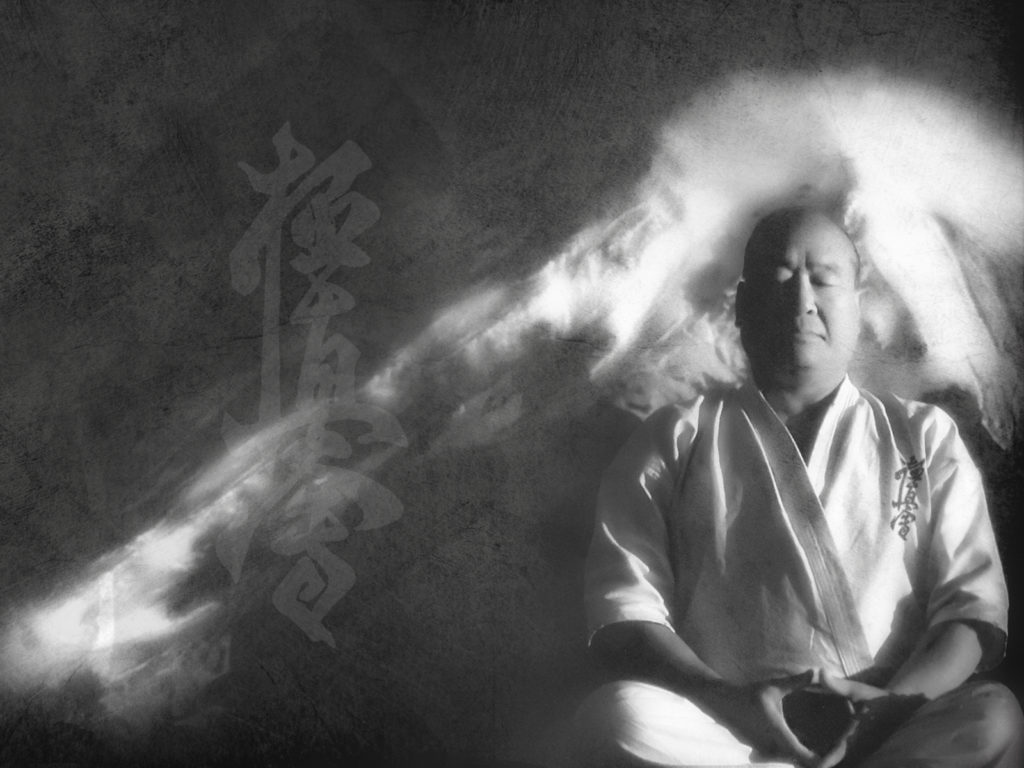
Mas Oyama’s Zazen
Karate master Mas Oyama emphasised the importance of meditation in karate training. He believed that meditation was essential for developing mental strength, focus, and discipline. Oyama taught his students to practice meditation as a way to center themselves, control their emotions, and improve their overall performance in karate. In Japanese martial arts, meditation is often incorporated into training sessions as a way to calm the mind and increase concentration. This practice helps practitioners to focus on their technique, improve their breathing control, and develop a deeper connection between their mind and body. Overall, Mas Oyama’s teachings on meditation in karate emphasize the importance of mental training as a crucial component of martial arts practice. By practicing meditation regularly, practitioners can develop mental strength, increase their focus, and enhance their overall performance in karate. A technique Oyama used in his training was focused breathing meditation, also known as “Zazen.” During Zazen meditation, practitioners sit in a
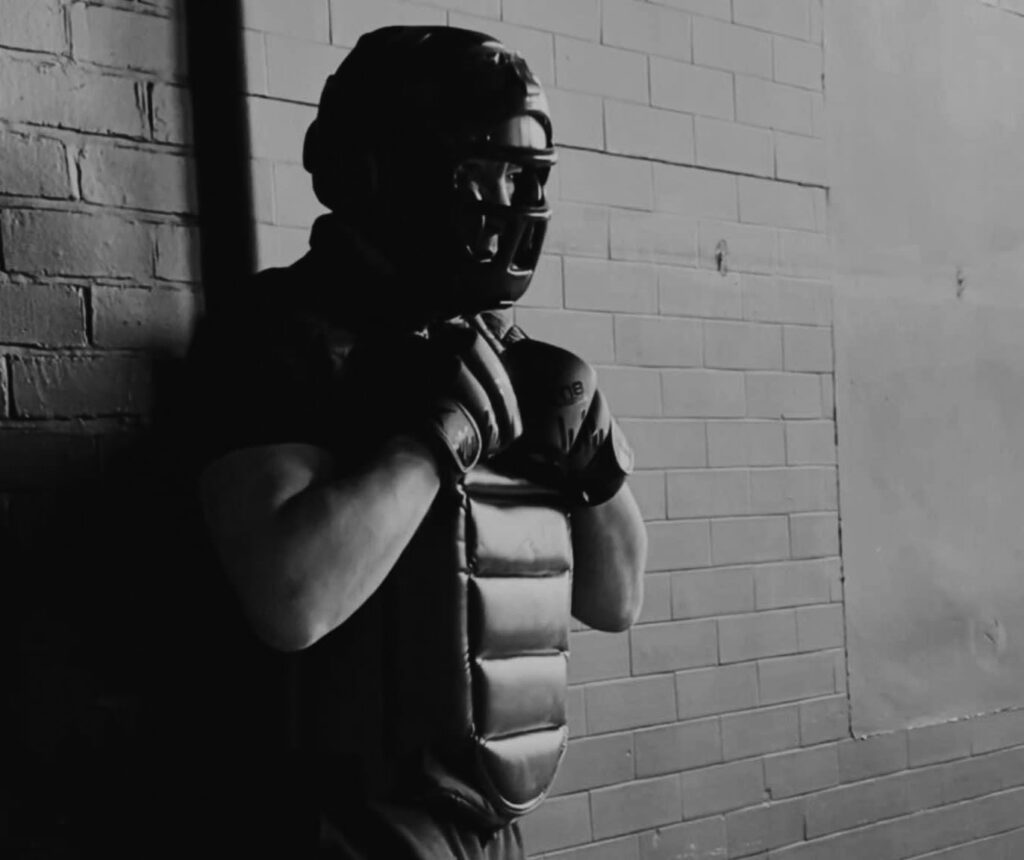
UK Self Defence Law
Self-defence is a fundamental right of individuals to protect themselves from harm in certain situations. In the UK, the law surrounding self-defence is complex and can be confusing for the average person. It is important for individuals to understand their rights and responsibilities when it comes to defending themselves, as misunderstanding the law could have serious legal consequences. In the UK, the law on self-defence is governed by the Criminal Law Act 1967 and the common law principle of “reasonable force”. According to the law, individuals are allowed to use reasonable force to defend themselves or others from imminent harm. This means that if you are attacked or feel that you are in danger, you have the right to protect yourself using force, as long as the force used is proportionate to the threat. It is important to note that the use of excessive force or premeditated violence is not considered self-defence and
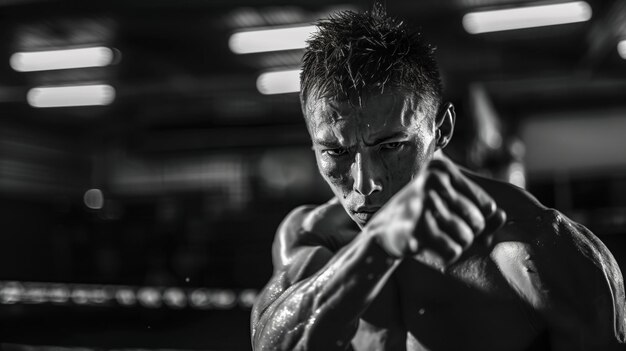
Zanshin – The art of awareness
Zanshin is a concept in Japanese martial arts that refers to a state of relaxed awareness or alertness. It is the mental state in which a martial artist is fully present, focused, and ready to respond to any potential threats or attacks. Zanshin is often described as a state of mind that is free from hesitation, distraction, or fear. To achieve zanshin in martial arts, practitioners must cultivate mindfulness and presence of mind. This can be achieved through regular meditation, breathing exercises, and visualisation techniques. Practicing mindfulness in everyday life can also help to develop zanshin in martial arts. In addition, training and conditioning the body is essential to achieving zanshin. A physically fit and agile body can respond more quickly and effectively to potential threats. Regular practice of martial arts techniques and drills can also help to improve reflexes and muscle memory, enabling practitioners to react instinctively in combat situations. Overall, achieving
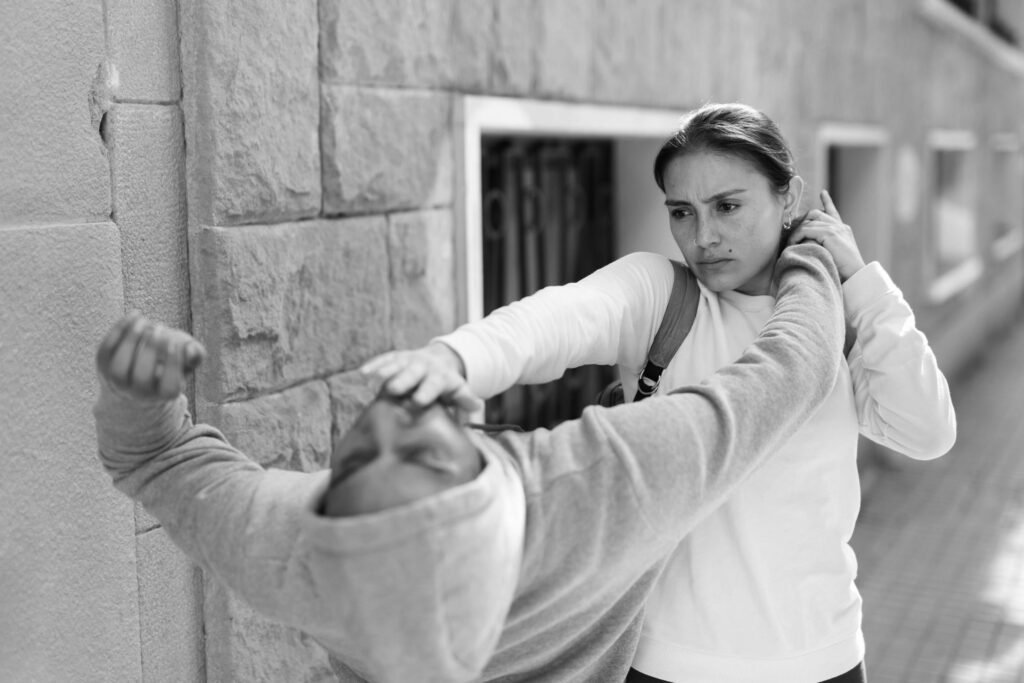
Situational Awareness
Self-defence situational awareness is the key to staying safe in any environment. Being aware of your surroundings and potential threats can help you avoid dangerous situations and protect yourself from harm. One of the most important aspects of situational awareness is being mindful of your surroundings at all times. This means paying attention to people and vehicles around you, as well as any potential hazards or unsafe areas. By staying alert and observant, you can quickly identify potential threats and take action to avoid or defuse them. Additionally, it’s important to trust your instincts. If something doesn’t feel right or if someone is making you feel uncomfortable, it’s important to listen to your gut and take action. This might mean leaving the area, seeking help, or alerting someone else to the situation. Overall, self-defence situational awareness is about being proactive and taking steps to protect yourself in any situation. By staying alert, trusting
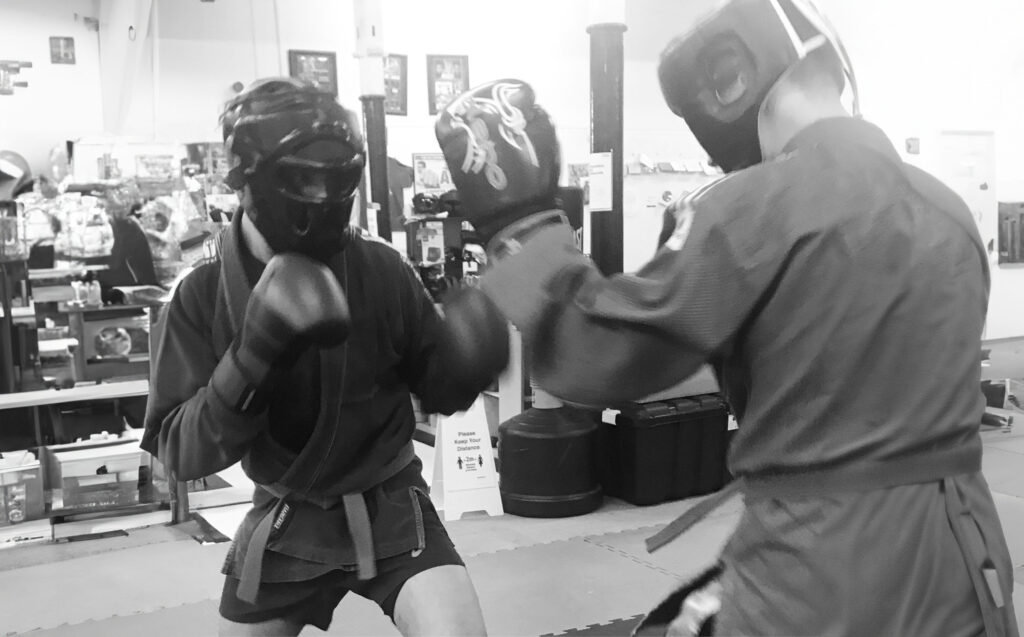
Why learn boxing skills?
Learning boxing skills can benefit a person in various ways, including: 1. Self-defense: Boxing skills can help you defend yourself in dangerous situations and protect yourself from potential harm. 2. Improved fitness: Boxing is a great workout that can help improve your cardiovascular health, strength, agility, and overall fitness levels. 3. Stress relief: Boxing is a great way to release stress and pent-up aggression in a safe and controlled environment. 4. Discipline and focus: Boxing requires discipline, focus, and mental toughness, which can help you develop these important skills in other areas of your life. 5. Confidence: Learning boxing skills can boost your confidence and self-esteem, as you become more skilled and capable in the sport. 6. Fun and enjoyment: Many people find boxing to be a fun and challenging activity that can be a great way to stay active and engaged. Overall, learning boxing skills can have a positive impact on your
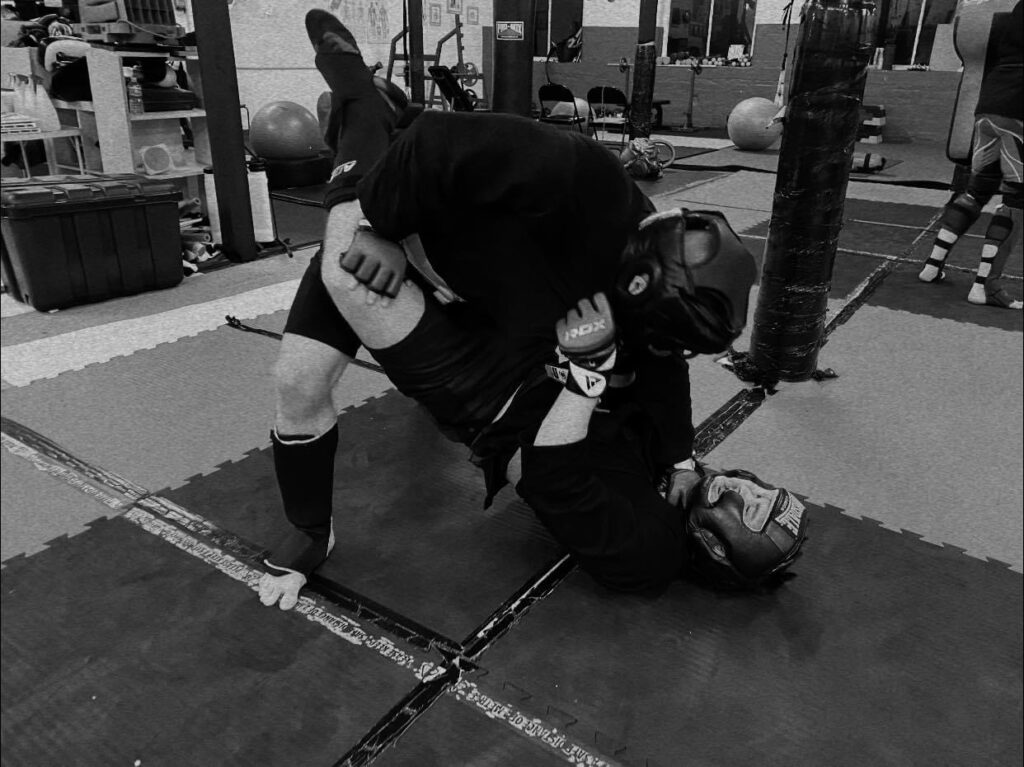
What is Ju-Jitsu?
Ju-Jitsu is a martial art that originated in Japan and has been practiced for centuries. It is a versatile and effective form of self-defence that focuses on using the opponent’s energy and movements against them. Ju-jitsu techniques include throws, joint locks, and submission holds, making it a comprehensive martial art that can be used in a variety of situations. One of the key principles of Ju-Jitsu is the concept of “ju” or yielding. Practitioners are taught to be flexible and adapt to different situations, rather than relying solely on brute strength. This makes Ju-Jitsu an ideal martial art for individuals of all ages and physical abilities, as it emphasises technique and strategy over sheer power. Ju-jitsu is also an excellent form of exercise, as it requires strength, agility, and stamina. Training in ju-Jitsu can improve cardiovascular fitness, flexibility, and overall coordination. It also helps to build confidence and self-discipline, as practitioners learn to
